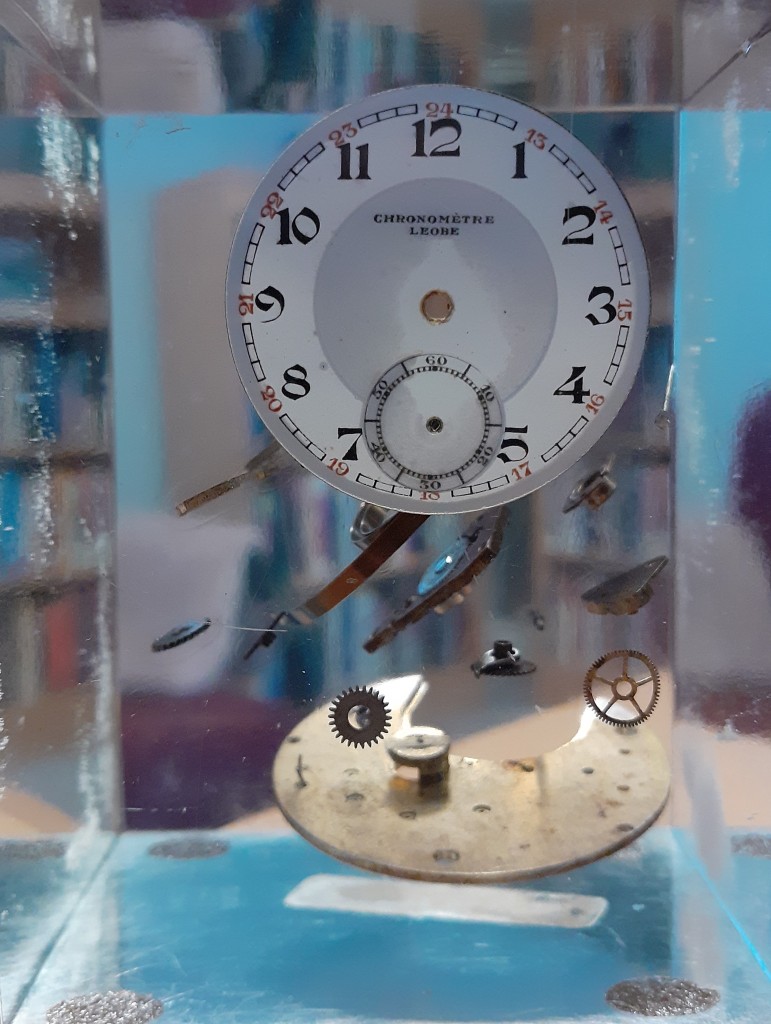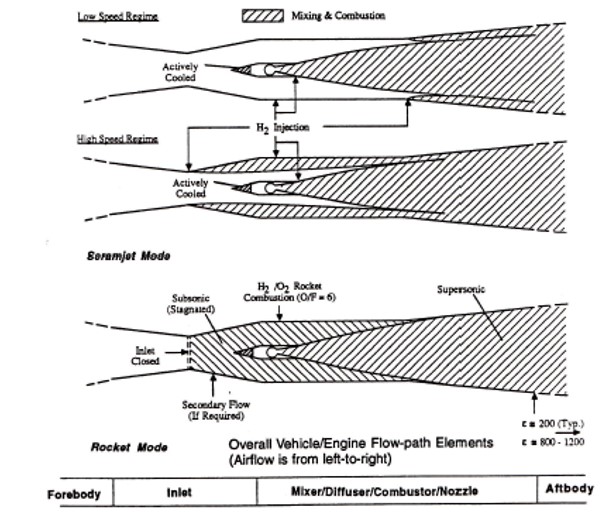It turns out rocket launches, a possible boil water notice here in Orlando, and hospitals caring for patients with COVID are all connected. Right now, it’s about liquid oxygen, but it would not be surprising to find more connections, like in any system. Oddly and often in projects, “it’s a system” was an observation that arrived at the party early only to find no one ready to receive it. If later, we were told everyone was now entertaining others. Coincidentally, I worked some years in both liquid oxygen facilities for the Space Shuttle and a systems engineering office. Now any news day is like the cat scene in The Matrix, that feeling of déjà vu, then brace for incoming.

Imagine the heat of a Florida day, mid-morning, everyone in heavy denim fire-retardant coveralls. Five liquid oxygen tanker trucks park neatly in reverse, one for each valve on a fill manifold to the Space Shuttle’s liquid oxygen (or “LOX”) storage facility. The drivers pressurize their tankers, valves to open and close at the truck’s rear housing. They connect hoses, and a welcome snowy frost covers these as liquid flows in them at minus 297 degrees Fahrenheit. The sea breeze cools, a welcome bit if nearly imperceptible, from passing over the frosty lines and if you stand in just the right spot. Once the offload is complete, the drivers disconnect the hoses, and residual droplets of LOX fall to a fizzle on the cement. Later in the day, we will do this, again and again, to fill up the storage tank and stand ready for our next launch.
…I reserved saying “we need to think about this as a single system,” for problems we could no longer afford to think about in parts.

I saw more connections after spending some years working the Shuttle’s bright orange External Tank, which we would fill with LOX (and liquid hydrogen) come launch day. I started to appreciate by then – it’s all connected, all parts of a single thing.
Years later, I found myself in the Kennedy Space Center “systems engineering” office. Not that anyone had a good idea at the time what the job title meant. Our discussions meandered like Russian babushka dolls, one inside another. The avionics is a system, right? Or is the system avionics plus the body flap? Eventually, a kind of understanding came around –like the boy who cried wolf, I reserved saying “we need to think about this as a single system” for problems we could no longer afford to think about in parts.
The fuselage of a reusable launch vehicle was among the first wolves we spotted. Before, it was possible to think aluminum airframe here, thermal tile over there, and lots of coordination and goo in between. But whereas the Shuttle had an external tank, a future reusable launch vehicle, like the SpaceX Starship today, has internal tanks. Inevitably, the new arrangement of materials was now a system. You could look at it as parts here and parts over there but at your own peril. First is the structure (composite, aluminum, or stainless steel, as with Starship). Then there is the insulation for the super-cold liquid oxygen or methane tank. Atop, there is some thermal protection for a fiery return from orbit, perhaps like the iconic Shuttle tiles. (And more parts I’m skipping over.) It is not as simple as it sounds – if you ponder how to stick a shower tile onto the wall insulation, not the cement board.
The “sandwich” (as I came to call it) of materials that emerged was definitely a system. It was no longer possible to think of this bunch of items and people as pieces of a puzzle that come together at the end. The parts needed to come together at the start. (The public figure below does not do credit to the technology and its difficulties.)

At best, “integrating,” as we said, was a fancy phrase about making sure all these people stayed out of each other’s hair.
Yet thinking of a sandwich of materials, steel, quilting, maybe foam, tiles, as a system, will seem simple once you want that ship to get to orbit like an airplane (not a rocket). An airbreathing spaceplane with a hypersonic engine was another challenge for NASA and DOD projects. And again, it slowly became the consensus it was all better viewed as a whole from the start. Breaking a problem into manageable steps or pieces is usually a good thing until it’s not. That was the case here – connections that could not be conveniently severed to parse work, as with a traditional rocket engine. Typically, there was the engine, and the structure, all this meaning people, with other technology and people in between. At best, “integrating,” as we said, was a fancy phrase about making sure all these people stayed out of each other’s hair. None of that will do for a true spaceplane. One day, if you are taking a flight to orbit, like Heywood Floyd in 2001: A Space Odyssey, it won’t have happened because someone broke up this new technology into smaller, more manageable pieces. This, too, will be a system, the parts all connected to where you can no longer easily say where one ends and the other begins – structure, engines, and keeping it all from turning into a molten mess.
These spaceplanes will use less liquid oxygen every flight because, like airplanes, they will use oxygen from the air they fly through. But we must hope we don’t one day have a liquid hydrogen shortage. (Here again, the public figure below does not do credit to the technology. We should build a real one someday. Hypersonics is that one part of my career where I realized the more I learned, the less I knew.)


Yet technology around the corner was not the only place this happened, discovering a system where before we gladly isolated parts. There are times we could have upgraded the Shuttles, only to find in reverse, changing a part would affect too much else as well. Next-generation thermal protection tiles worked wonderfully when these were placed here and there on orbiters, a world of difference vs. the original damage-prone tiles. Putting this new tile all over proved a leap too far, too late. The Shuttle’s parts were notoriously intertwined to the point where the tiniest change seemed to reach out and touch someone, everywhere.

Systems are everywhere, as so much is connected or should be. In these pandemic days, I discover more of those connections we might not otherwise have appreciated every day. Because, at the end of the day, we are all connected as well.

Well put. In fact, even the terms “systems engineering” and “systems integration” are all too-often misunderstood; or worse, used interchangeably. Back in the early development years of what ended up being called the International Space Station, I was the NASA Senior Executive in the Space Station Program Office, heading up the largest group there, which I called System Engineering and Project Integration. (The “Projects” being the 4 (initially) US Projects that made up the US part of the space station program; coupled with the IPP/International Partner Projects, of Japan, Canada, Europe, and Russia). By “largest group there”, I presented data at one point to the space station program manager, when I was begging for resources, showing that while I had over 60% of the work of the entire Space Station Program Office under me, I only had about 25% of the resources – especially only 25% of the people, who were being worked to death- to get the job done.
I was questioned sometimes about why I called the organization/work we did “System Engineering”, not “SystemsS Engineering” (or, as in the Space Shuttle Program Office, Systems Integration). I actually enjoyed explaining why I did that; because I wanted to get away from the whole idea that “all” the job we had to do involved was snapping together the individual systems that the many US and International Partner Projects were designing, testing, and building. That what we were the ‘owners’ of— and responsible for, whether the International Partners liked it or not (and some didn’t like it….but I won’t mention any group in particular…..ESA…..) what we were responsible for was the whole kit and kaboodle as a single, functioning organism. Which is why I was not only in charge of all the technical design requirements for the space station; but the functional requirements as well; e.g., dividing up power utilization, thermal utilization, space/storage allocations, crew internal time….etc.; including what turned out to be the worst one of all, EVA time needed to assemble and then maintain DURING assembly the whole thing. I finally just got to the point that, when people, askied me what my job/authority (!)/responsibility boiled down to, I finally just pointed to whatever was the overall latest picture of the whole space station was, and I’d say: “What that picture actually is, IS my job”. That usually shut them up.
Dave Huntsman
LikeLike
So true Dave. That “picture” which is how it all comes together is so much about appreciating connections rather than only parts. We neglect the picture and the connections at our own risk.
LikeLike